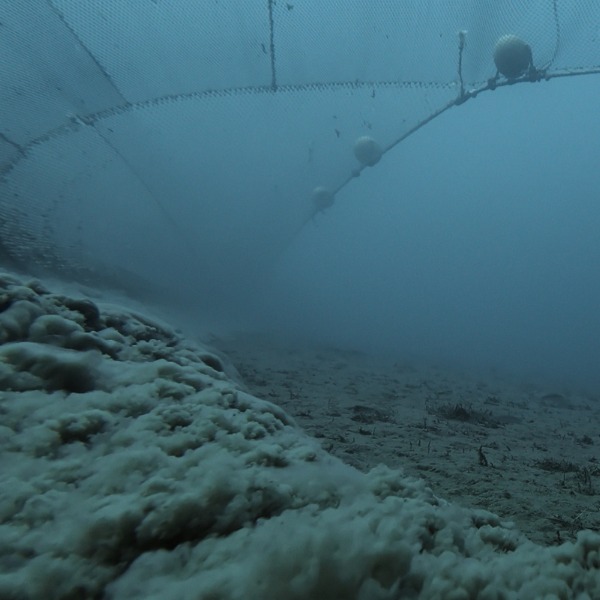View this post on Instagram
Nestled nearly 300 miles off the coast of Oregon is Axial Seamount, a 3,600-foot-tall underwater volcano that scientists believe may erupt very soon. The eruption would be the volcano’s first in 10 years, offering critical insight into predicting such marine events in the future.
Luckily, Axial Seamount doesn’t pose a threat to us humans—it’s too deep in the Pacific Ocean and too far from shore to impact seismic activity on land. In fact, Mike Poland, scientist-in-charge at the Yellowstone Volcano Observatory, is actually looking forward to the upcoming eruption.
“This particular volcano is probably the best-monitored submarine volcano in the world,” Poland told Cowboy State Daily. “It’s fascinating and doesn’t really pose a hazard.”
Once the Axial Seamount finally blows, it’ll “look a lot like a Hawaiian lava flow eruption,” Poland added, where “calm effusions of lava [flow] out of the caldera and across the seafloor.” This is in large part due to Axial Seamount being a shield volcano, which are typically characterized by their low-explosivity in comparison to “supervolcanoes” like the one found in Yellowstone. Shield volcanoes can, of course, lead to significant destruction given the impressive speed at which their lava moves, but Axial Seamount remains nonthreatening at 4,626 feet beneath the ocean.
“Deep submarine eruptions are inhibited by the tremendous water pressure of the ocean,” Poland explained. “Even explosive eruptions struggle against the ocean.”
The magma expelled from Axial Seamount will also be immediately cooled by the surrounding water, creating what’s known as pillow lavas within volcanology. As their name suggests, these pillow lavas resemble bulbous masses cloaked in a layer of skin that effectively cools them to their core, effectively undermining their destructive properties.
How, exactly, do scientists know that the eruption is imminent? The seafloor around Axial Seamont has been inflating for the past few months, and an increased number of earthquakes beneath the volcano provides an additional clue.
“Over time, the volcano inflates due to the buildup of magma beneath the surface,” William Wilcock, a professor at the University of Washington School of Oceanography, told FOX Weather. “Some researchers have hypothesized that the amount of inflation can predict when the volcano will erupt, and if they’re correct it’s very exciting for us, because it has already inflated to the level that it reached before the last three eruptions.”
Axial Seamount most recently erupted in 2015, and, prior to that, in 2011 and 1998. Based on current inflation, scientists believe that the volcano will erupt by the end of the year—if not before then.
“It’s frequently active,” Poland said. “Geologists monitoring Axial Seamount have observed that it reaches a certain threshold in terms of inflation, then it erupts.”
Alongside Yellowstone National Park, Axial Seamount is the world’s best-monitored volcano. By tracking its activity and eventual eruption, Axial Seamount can illuminate the behavior of other volcanoes across the globe.
“Axial Seamount is not so dissimilar from the volcanoes in Hawaii and Iceland, except that it’s deep on the seafloor,” Poland concluded.
Besides that, the eruption will produce fascinating noises on the seafloor as magma collides with cool ocean water, according to the UW College of the Environment.
“When a pocket of seawater gets trapped beneath a lava flow, it heats up and turns to steam,” Wilcock explained. “When that steam finally escapes, it forms a bubble which cools very quickly and collapses, causing a loud implosion that we can pick up with our hydrophones.”
Scientists don’t have a specific timeline for Axial Seamount’s eruption, but they will continue to monitor the volcano until then.
Scientists predict that Axial Seamount, an underwater volcano off the coast of Oregon, will erupt by the end of this year—but it won’t pose a threat to humans since it’s too deep in the ocean and too far from shore.
View this post on Instagram
Sources: 3,600-Foot-Tall Undersea Volcano Expected To Blow This Year, But Nobody’s Worried; Underwater volcano off Oregon's coast inching closer to eruption, scientists say
Related Articles:
Surreal Photos Reveal the Destructive Aftermath of the Cumbre Vieja Volcano Eruption
Breathtaking Videos Capture Lightning Striking an Erupting Volcano in Guatemala
Olympus Mons: The Largest Volcano in Our Solar System Is Located on Mars





















































































